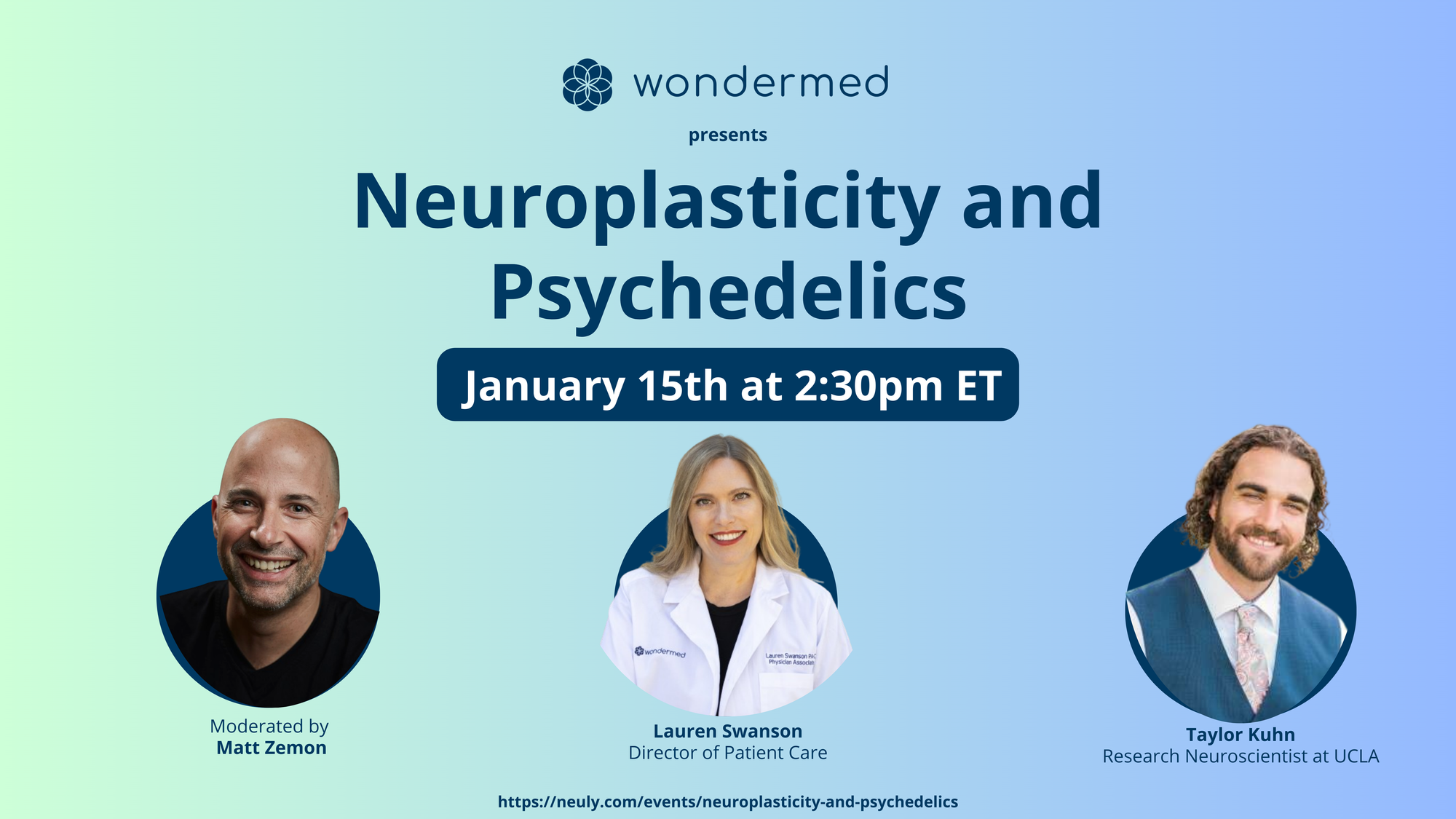Ketamine, Psychedelics, and Neuroplasticity: Experts Weigh In
Learn more about the link between neuroplasticity, psychedelics, and mental health from two experts in our recent webinar.

Neuroplasticity is an incredibly powerful concept in the field of mental health. It refers to the brain’s innate ability to change by forming new neural connections and reshaping existing ones.
Neuroplasticity is thought to play a key role in the therapeutic effects of psychedelics for mental health conditions like depression and anxiety. By enhancing neuroplasticity in the brain, drugs like psilocybin and ketamine make it easier to break out of negative patterns of thought and behavior and adopt healthier, more positive ones.
In our recent webinar with Neuly, we explored the concept of neuroplasticity and the role it plays in the emerging space of psychedelic-assisted therapy.
Leading the discussion was Wondermed’s Director of Patient Care, Lauren Swanson, PA, alongside Taylor Kuhn, PhD, an Assistant Research Neuroscientist in the Department of Psychiatry and Biobehavioral Sciences at UCLA. Matt Zemon, author of two best-selling books on the therapeutic use of psychedelics, moderated the panel.
Topics covered included:
- What happens in the brain when someone takes psychedelics
- How to take advantage of the window of increased neuroplasticity induced by psychedelics for healing
- How different psychedelics affect the brain and the implications for treating different mental health conditions
- The applications of ketamine, how to access it, how it’s administered, and other considerations for therapeutic use
- The dangers and risks of psychedelics and strategies to mitigate harm and ensure safety
Want to hear more? Watch the full recording here.

Ready to embark on your own healing journey with Wondermed?
Get StartedWant to learn more about at-home ketamine therapy?
- To find out more about Wondermed’s at-home ketamine treatment program, visit our homepage.
- To dive deeper into the science behind how ketamine works to treat depression and anxiety, check out our comprehensive guide.
- If you’re a clinician looking to add ketamine treatment to your own practice, learn more about our partnered provider program.
- Questions about Wondermed? Reach out to our clinical support team at wondermate@wondermedclinics.com

